Several threads triggered me to figure out how I, as a relaxing dead-weight, am exerting pressure on the trees I'm hanging from; and how to best do that as to prevent damage to my big supporters.
I'll try and illustrate as much as I can by using figures and not just formulas. And if it unclear please let me now and I'll try to clarify, updating (editing) this very message.
The basic setup starts out with common practice on HF, that I learned from my first source of knowledge on hammock camping: "The Ultimate Hang". What a great read!
But right from the start I am putting in a slight change with respect to the basic hangup in TUH, seen in the picture on "tree 2", where the hammock is suspended with a double-wrap basket hitch to reduce the load on the tree.
This setup is based on the broadly accepted 30° hang angle, distributing a load to both trees that equal to the load in the hammock.
Towards the tree there is another split-up of forces, one load to either side of the tree. The same principles governing the distribution of the load on the hammock to the two trees are applicable for this split-up.
The image shows why a choker hitch setup causes a tension (load) in the webbing (or cord) that is just about twice the tension in the webbing in case of a basket hitch setup.
(I intend to do a double wrap basket hitch myself so my suspension is less prone to slide down the tree, but that makes no big difference in the tension in the webbing)
Combining these images to show where it is happening, it looks like this:
Notice the sudden change in direction of the webbing on "tree 1", in the "traditional setup". I expect most hangers to tighten their tree-straps horizontally, before connecting the hammock to it by means of Whoopie-slings or whatever. Only after that, the tree-straps will be loaded under the 30° (hang) angle, so initially only the part of the tree-straps that do not touch the tree will angle downward. This obviously puts (too big) a sheer force on the spot on the webbing where it just touches the tree. And the webbing can be expected to shift downward until a larger proportion of the tree-straps are at the 30° angle, in line with the suspension line. I would not be surprised that this caused the rubbing marks on the side of the tree that was recently posted.
But now that I know what the tension load in the webbing around the tree is, just how much pressure does is exert on the tree?
To even begin to answer that I started out with a simplification: although it is clear that a tree with a more or less cylindrical trunk has a cross section in the shape of a ellips when crossed at an angle (30°), I set out with a circle. As if the load is put on the tree horizontally.
I case a spreader bar would be used, it would be possible to have the two ends lay in parallel towards the tree, each loaded with T (being the load on the hammock Fh divided by two).
When looking at just a tiny slice (φ*R) of the circumference of a perfectly circular "tree", applying Newton's law (equilibrium of forces) results in a prescription for the local pressure σ as a function of T, webbing width w and radius of curvature R.
In case of purely cylindrical tree-trunks under horizontal load, we would be done here. But I yet have to encounter the first of such trees.
In reality, trees are twisted and botched, so locally the radius of curvature might be much smaller, meaning the local pressure a lot higher. E.g. in the next image, the highest pressure would act on the red surfaces.
At the indicated position, the radius is about 1/10th of the average radius o the tree, which means the local pressure will be about 10 times the average pressure.
This pressure, or "normal stress" (stress in the direction of the normal vector of the surface) isn't all bad. In fact, we need this normal stress to be able to convert the shear force that keeps us suspended during the night. It is not the pressure (normal stress) that keeps us off the ground, but friction,by means of shear stress.
And although I don't know, I do think it is possible that excessive shear stress damages the tree, just like excessive shear stress on the human skin causes blisters. I have no idea what a blister on a tree would look like, but I can imagin that delamination in the cambium would seriously hurt the tree without necessarily being visible on the outside.
Not every section of the tree is loaded in a similar matter. Perhaps this is even more visible when the suspension is tied around multiple smaller trees.
So let me sketch a scenario with three trees.
In this situation, Tree A is the widest tree, Tree C the thinnest. In case there would be no friction and the load would be put up horizontally only, these trees would be loaded like this:
With friction, some of the load Fh is carried by trees A and B.
{Next thing to add: How friction (shear stress) keeps a hammock suspended; I will edit and add to this posting in days to come}
Comments are welcome!
Regards,
Jaap



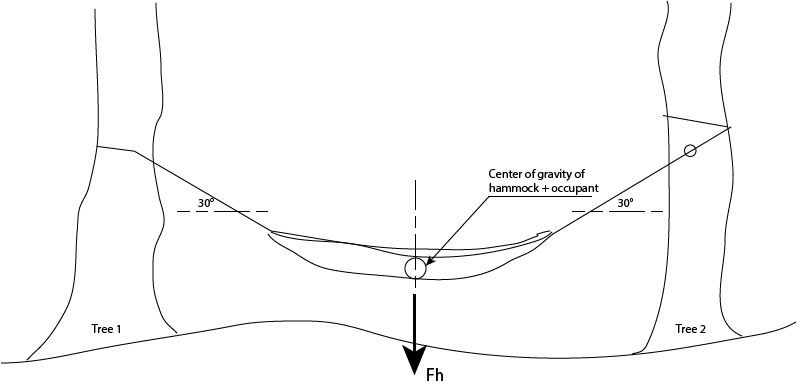
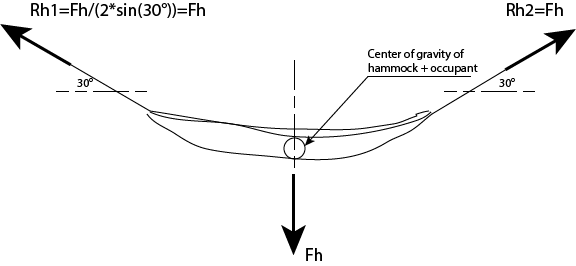
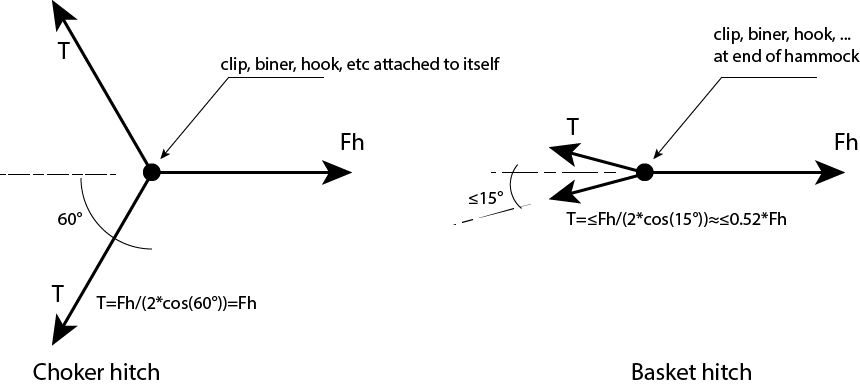
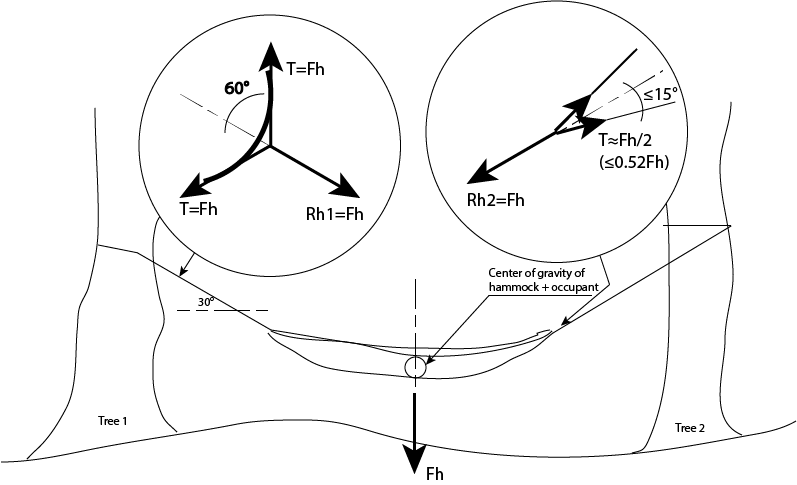
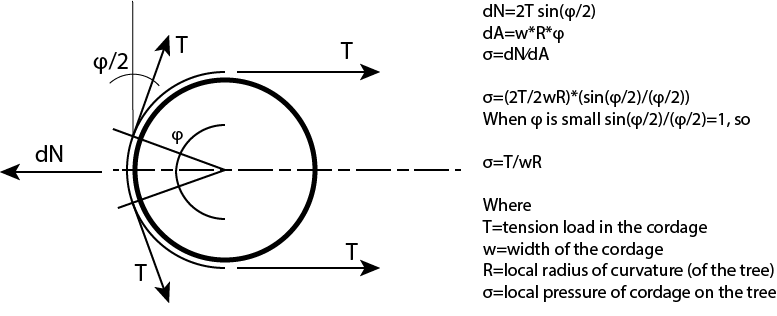
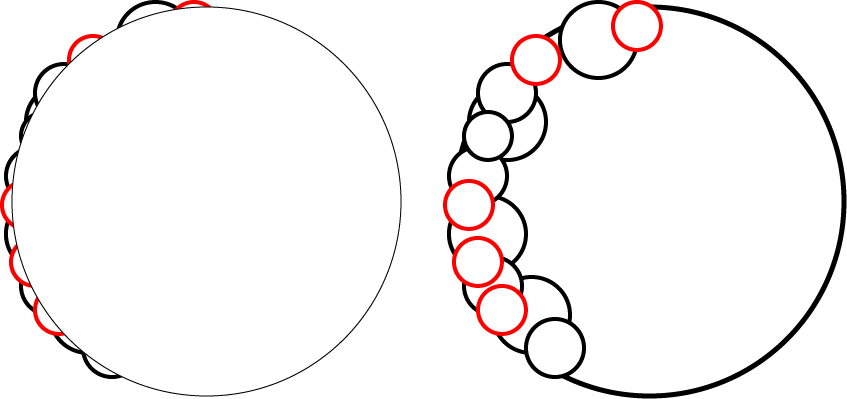
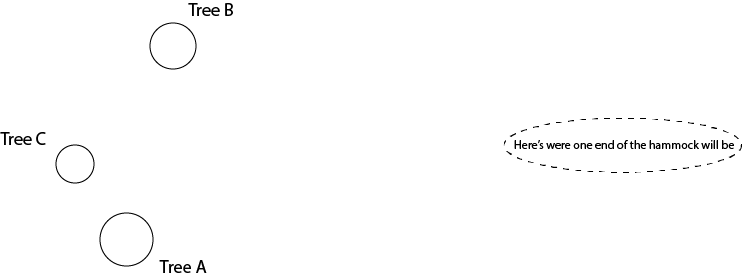

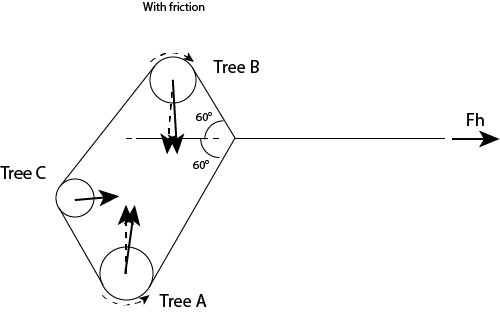

 Reply With Quote
Reply With Quote







 The camper formerly known as HikingDad...
The camper formerly known as HikingDad...
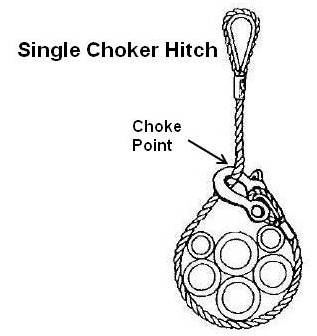
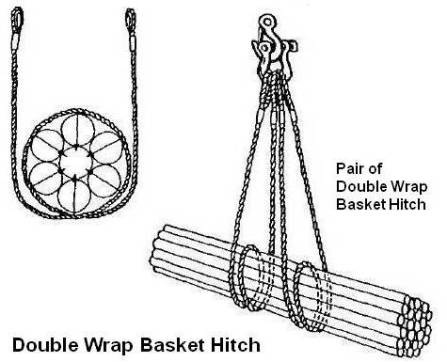

Bookmarks